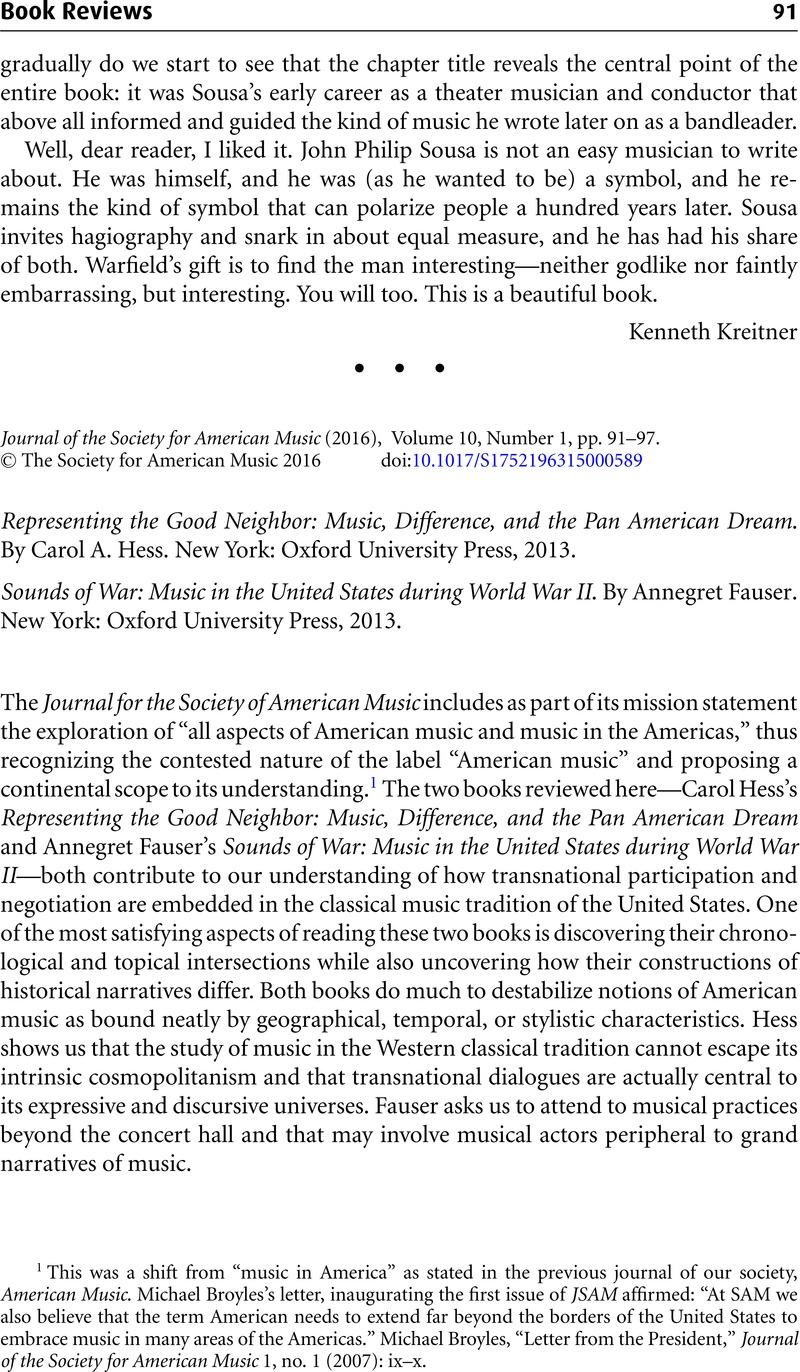No CrossRef data available.
Article contents
Representing the Good Neighbor: Music, Difference, and the Pan American Dream. By Carol A. Hess. New York: Oxford University Press, 2013. - Sounds of War: Music in the United States during World War II. By Annegret Fauser. New York: Oxford University Press, 2013.
Published online by Cambridge University Press: 12 February 2016
Abstract

- Type
- Book Review
- Information
- Copyright
- Copyright © The Society for American Music 2016
References
1 This was a shift from “music in America” as stated in the previous journal of our society, American Music. Michael Broyles's letter, inaugurating the first issue of JSAM affirmed: “At SAM we also believe that the term American needs to extend far beyond the borders of the United States to embrace music in many areas of the Americas.” Broyles, Michael, “Letter from the President,” Journal of the Society for American Music 1, no. 1 (2007): ix–xCrossRefGoogle Scholar.
2 For studies in this direction see Stephanie Stallings, “Collective Difference: The Pan-American Association of Composers and Pan-American Ideology in Music” (Ph.D. diss., Florida State University, 2009); Jennifer Campbell, “Shaping Solidarity: Music, Diplomacy, and Inter-American Relations, 1936–1946” (Ph.D. diss., University of Connecticut, 2009); Campbell, Jennifer, “Creating Something Out of Nothing: The Office of Inter-American Affairs Music Committee (1940–41) and the Inception of a Policy for Musical Diplomacy,” Diplomatic History 36, no. 1 (2012): 29–39CrossRefGoogle Scholar.
3 See, for example, Béhague, Gerard, Music in Latin America: An Introduction (Englewood Cliffs, NJ: Prentice-Hall, 1979)Google Scholar.
4 The concept of a usable past as source of musical identity in the United states goes back at least to Brooks, Van Wyck, “On Creating a Usable Past,” The Dial 64, no. 7 (1918): 337–41Google Scholar.




